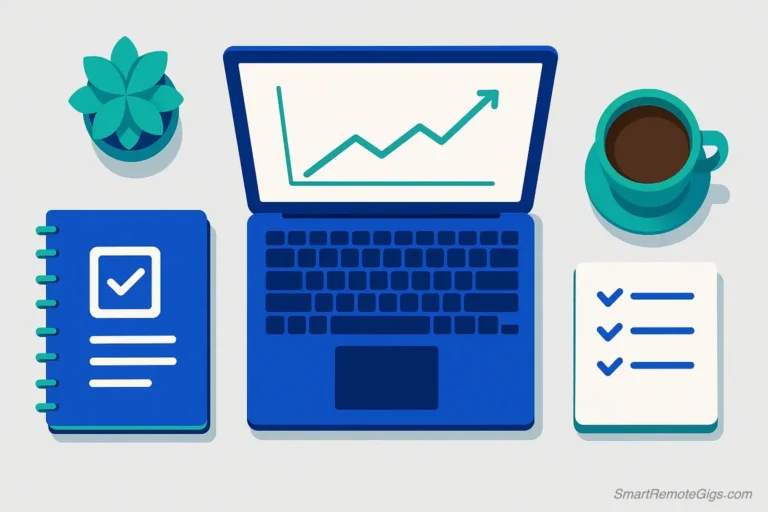You have the skills. You’ve decided to freelance. But you’re staring at a blank client roster, wondering “Where do I even start?” The gap between having talent and landing paying clients can feel impossibly wide.
This comprehensive guide on how to find freelance clients is not another overwhelming list of 50 random tactics. Instead, it’s a structured, sequential roadmap designed to take you from zero clients to your first paying gig, then scale from there. Whether you’re a writer, designer, developer, or any other type of freelancer, these seven steps will give you the clarity and confidence to start landing clients this week.
Here’s what you’ll learn:
- How to build a foundation that attracts high-quality clients
- The three strategic channels for finding clients
- Proven advice from six-figure freelancers
- How to craft pitches that get replies
- Leveraging your existing network effectively
- Turning one client into three through referrals
- Answers to your most pressing client acquisition questions
Step 1: Prepare for Success (Your Client-Ready Foundation)
Before reaching out to potential clients, you need three foundational elements in place. Skipping this preparation step is the #1 reason freelancers struggle to land their first clients or end up working for unsustainably low rates.
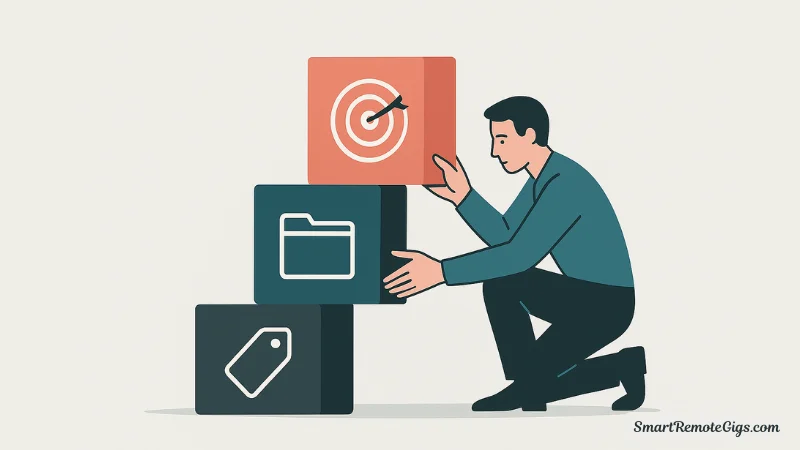
Define Your Niche & Ideal Client
The biggest mistake new freelancers make is positioning themselves as generalists. “I do graphic design” is far less compelling than “I design email newsletters for health and wellness brands.”
Why specialization matters for finding freelance clients:
- Specialists can charge 30-50% higher rates than generalists
- Clients perceive specialists as experts who understand their specific challenges
- Targeted marketing is exponentially easier when you know exactly who you’re serving
- You build expertise and efficiency faster in a focused area
How to define your niche:
- Identify your strongest skill: What can you do better than most people?
- Choose an industry or client type: E-commerce, SaaS companies, coaches, restaurants, etc.
- Combine them into a positioning statement: “I help [client type] achieve [specific outcome] through [your service]”
Example positioning statements:
- “I write conversion-focused email sequences for online course creators”
- “I build custom Shopify stores for handmade product businesses”
- “I create social media content for real estate agents”
Build Your “Minimum Viable Portfolio”
You don’t need 20 projects to start attracting clients. You need 2-3 high-quality samples that demonstrate your capabilities and understanding of your niche.
Remember, the goal of a portfolio isn’t just to show your work; it’s to show a potential client that you can solve their specific problem.
If you have no client work yet, create spec projects:
- Redesign a real company’s website or marketing material (don’t ask permission, just create it as a sample)
- Write blog posts or create graphics for your ideal client type
- Build a project that solves a common problem in your target industry
Portfolio essentials:
- Clear before/after comparisons or problem/solution explanations
- Specific results or benefits the work achieved
- Professional presentation that’s easy to view and navigate
For detailed guidance on building your portfolio, including five complete examples, check out our guide: Build a Freelance Portfolio from Scratch (5 Examples).
Determine Your Starter Rate
Underpricing is one of the fastest ways to burn out or attract nightmare clients. Use this simple framework to set sustainable rates:
The starter rate formula:
- Calculate your target annual income (e.g., $50,000)
- Divide by billable hours (typically 1,000-1,200 hours/year for freelancers)
- Result: Your minimum hourly rate ($42-50/hour in this example)
For project-based pricing:
- Estimate hours required for the project
- Multiply by your hourly rate
- Add 20-30% buffer for revisions and unexpected complexity
Reality check: If you’re truly brand new, you might start 10-20% below your target rate to build momentum, but never go so low that you resent the work. Your rates should increase every 3-6 months as you gain experience and results.
Step 2: Choose Your Acquisition Channel (The 3 Client Funnels)
There are three main ways to find freelance clients, each with different timelines, effort levels, and success rates. The key is understanding when to use each approach.

Funnel 1 – The Fast Lane (Marketplaces)
Best for: Immediate opportunities, building initial experience, testing your services
Freelance marketplaces like Upwork and Fiverr connect freelancers with clients who are actively looking to hire. You can start applying for projects within hours of creating your profile.
Advantages:
- Clients are actively looking to hire right now
- Built-in payment protection and dispute resolution
- Easier to land your first few projects
- Great for building initial portfolio and testimonials
Challenges:
- Heavy competition, especially at entry level
- Platform fees reduce your take-home pay (typically 10-20%)
- Race-to-the-bottom pricing on general services
- You’re building the platform’s asset, not your own client base
How to Succeed on Marketplaces
- Create a highly specific profile focused on your niche
- Apply to 10-15 jobs daily when starting out
- Write custom proposals for each job (never copy-paste)
- Start with smaller projects to build reviews, then increase rates
- Treat it as a temporary launching pad, not a permanent strategy
For a detailed comparison of the two major platforms and which is right for you, read: Upwork or Fiverr? A 2025 Guide for New Freelancers.
Funnel 2 – The Direct Route (Outreach)
Best for: Targeting specific clients you want to work with, building higher-value relationships
Direct outreach means proactively contacting potential clients through cold pitching, LinkedIn messages, or email campaigns. This approach requires more effort but often yields better-quality clients and higher rates.
Advantages:
- You choose who you want to work with
- No platform fees or middlemen
- Higher potential rates from the start
- Builds real business relationships
Challenges:
- Requires confidence and persistence
- Lower response rates (expect 5-10% on cold outreach)
- Takes time to see results
- Can feel uncomfortable at first
How to Succeed with Direct Outreach
- Create a list of 50-100 potential clients in your niche
- Research each company to find specific problems you can solve
- Send personalized pitches that focus on their needs, not your services
- Follow up 2-3 times with added value (article, idea, resource)
- Track your outreach in a simple spreadsheet
We’ve created a proven template that consistently gets replies: The Perfect Freelance Cold Pitch Template (Gets Replies).
Funnel 3 – The Long Game (Inbound)
Best for: Building sustainable, long-term client flow; positioning as an authority
Inbound marketing means creating content or building a presence that attracts clients to you. This includes blogging, social media content, YouTube videos, podcasts, or speaking engagements.
Advantages:
- Clients come to you pre-sold on your expertise
- Higher rates because you’re perceived as the expert
- Sustainable and scalable over time
- Builds genuine authority in your field
Challenges:
- Takes 3-6 months to see meaningful results
- Requires consistent effort and content creation
- Not suitable if you need clients immediately
- Can be time-consuming without guarantees
How to Succeed with Inbound Marketing
- Start with one platform where your ideal clients spend time
- Share specific, actionable advice (not generic motivational content)
- Document your freelance journey and lessons learned
- Engage genuinely with others in your niche
- Be consistent for at least 90 days before evaluating results
The smart approach: Most successful freelancers use a combination—start with marketplaces or outreach for immediate income, then build inbound systems for sustainable growth.
Step 3: Learn from the Pros (Real Advice from Real Freelancers)
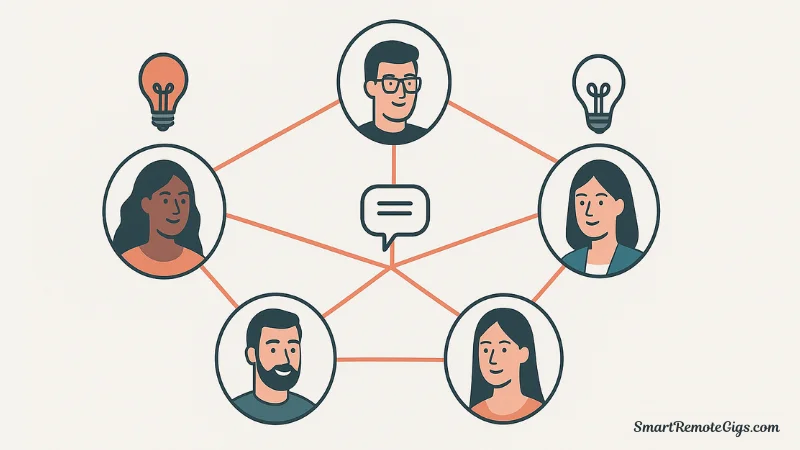
Theory is valuable, but results are better. We asked six-figure freelancers for the one piece of advice that helped them land their first clients. Here’s what they shared:
“I spent two weeks perfecting my portfolio before reaching out to anyone. Huge mistake. What actually got me my first three clients was sending 50 imperfect pitches in one week. Action beats preparation every time.”
— Sarah Chen, Freelance Content Writer
“My breakthrough came when I stopped saying ‘I do logo design’ and started saying ‘I help wellness brands create calming, trustworthy visual identities.’ Suddenly people understood exactly what I did and why they needed me.”
— Marcus Rodriguez, Brand Designer
“The biggest mistake I see new freelancers make is underpricing. I charged $25/hour at first and attracted nightmare clients. When I raised my rates to $75/hour, I got better clients who respected my time and expertise.”
— Jennifer Park, Web Developer
“LinkedIn was a game-changer for me. I spent 20 minutes daily commenting thoughtfully on posts in my industry. Within two months, people were reaching out to me instead of me chasing them.”
— David Okonkwo, Marketing Consultant
“I landed my first paying client by offering to do a small project for free—but with one condition: if they liked it, they’d introduce me to two other people who might need my services. That one project turned into 12 clients.”
— Emma Larsson, Social Media Manager
“Stop waiting for the ‘perfect’ client. My first three clients were small projects that paid modestly, but the testimonials and portfolio pieces they gave me helped me land much bigger clients later. Everyone has to start somewhere.”
— Alex Patel, UX Designer
The common thread: Every successful freelancer emphasizes action over perfection, specialization over generalization, and the importance of simply starting, even if conditions aren’t ideal.
Step 4: Master the Art of the Pitch
Your pitch is the bridge between having skills and landing clients. A strong pitch doesn’t sell your services—it sells the specific results you can deliver for that particular client.
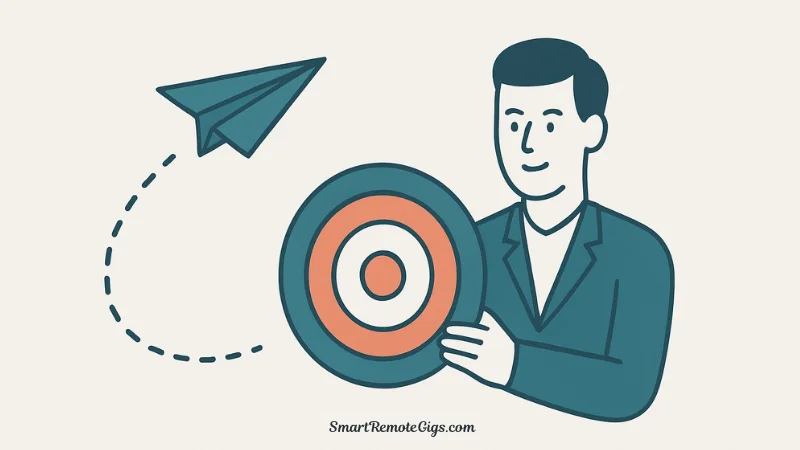
The Anatomy of a Pitch That Gets Replies
Every effective pitch contains four essential components:
1. Personalized Hook (Opening 2 sentences)
Reference something specific about their business, a recent post, or a problem you’ve noticed. This proves you’ve done your research and aren’t sending mass emails.
Example: “I noticed your recent blog post about increasing customer retention mentions the challenge of keeping subscribers engaged. Your content is excellent, but your email open rates could likely be doubled with better subject lines and segmentation.”
2. Value Proposition (Middle 2-3 sentences)
Explain the specific outcome you can deliver and how it benefits them. Focus entirely on their needs, not your credentials.
Example: “I specialize in writing email sequences for SaaS companies that increase open rates by 40-60% and drive more trial-to-paid conversions. I’ve helped three companies in your industry achieve these results in the past six months.”
3. Credibility Indicator (1 sentence)
Briefly mention a relevant result, client, or credential. Keep it short—you’ve already established value.
Example: “My recent work with [Similar Company] increased their email engagement from 18% to 34% in 60 days.”
4. Simple Call to Action (Closing 1-2 sentences)
Make it easy for them to respond with a low-commitment next step.
Example: “Would it make sense to schedule a 15-minute call this week to discuss your email strategy? I have a few specific ideas I’d love to share.”
A Simple Pitch Template You Can Adapt
Subject: Quick idea for [Their Company]'s [specific challenge]
Hi [Name],
I came across [specific thing about their business] and noticed [specific observation or problem]. [Brief explanation of why this matters to them].
I help [type of business] achieve [specific outcome] through [your service]. [Brief mention of a relevant result or credential].
I have a few specific ideas for [their company] that could [desired outcome]. Would you be open to a brief 15-minute call this week to discuss?
[Your name]
[Your Title - e.g., "Freelance SaaS Writer"]
[Link to Your Portfolio]Key principles:
- Keep it under 150 words
- Make it about them, not you
- Show you understand their business
- Propose a low-commitment next step
Step 5: Activate Your “Warm” Network
Your existing network is the most overlooked source of initial freelance clients. These are people who already know, like, and trust you—dramatically increasing your success rate.
The “Soft Launch” Announcement
Announce your freelance services without sounding desperate or pushy. The key is framing it as exciting news, not a plea for work.
Social media template:
After [X years/months] of [previous work/preparation], I'm excited to announce that I'm now taking on freelance clients for [your specific service].
I'm particularly interested in working with [ideal client type] who want to [specific outcome you deliver].
If you know anyone who might benefit from [specific service], I'd love a connection. And if you have questions about what I do, feel free to reach out!
[Link to portfolio or contact info]Email to former colleagues/contacts:
Subject: Quick update—and a question
Hi [Name],
Hope you're doing well! I wanted to share that I've started freelancing in [your niche], specifically helping [client type] achieve [outcome].
I'm reaching out because I remember you mentioning [relevant connection to their work/network]. If you happen to know anyone who might benefit from [your service], I'd greatly appreciate an introduction.
Either way, hope all is well with you!
Best,
[Your name]How to Ask for Connections, Not Jobs
The subtle difference between asking for work and asking for introductions can dramatically affect responses.
Don’t say: “Do you know anyone who needs a freelance writer?”
Do say: “I’m working with e-commerce brands on their email marketing. If you know anyone in that space, I’d love an introduction.”
Don’t say: “If you need design work, let me know.”
Do say: “I’m taking on two new design clients this quarter. If you know any startups needing branding work, I’d appreciate you thinking of me.”
The psychology: People are uncomfortable saying no to direct asks for work, but they’re happy to make introductions when they know someone relevant.
Step 6: Turn One Client Into Three (The Referral Engine)
Your first client is valuable not just for the payment and portfolio piece, but for the potential referrals they can provide. Most freelancers leave this opportunity on the table.
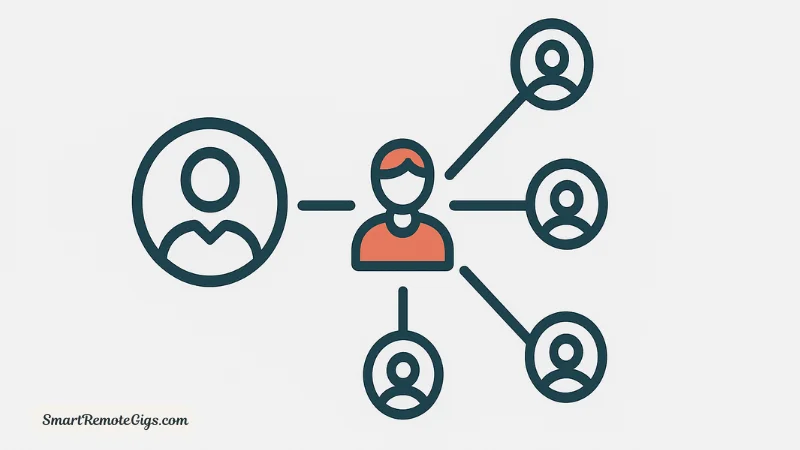
The Key is Excellent Service
The foundation of referrals is exceptional work. This doesn’t mean perfection—it means:
- Delivering on time (or early)
- Communicating proactively about progress and challenges
- Going slightly beyond what was agreed upon
- Making the client’s life easier, not harder
- Following up after project completion
The Perfect Time and Script to Ask for a Referral
Timing: Ask for referrals 1-2 weeks after successfully completing a project, when the positive results are fresh but before they’ve moved on mentally.
Email template:
Subject: Quick question about [completed project]
Hi [Client name],
I hope [project/deliverable] is working well for you! It was a pleasure working together on [specific aspect].
I wanted to reach out because I'm currently taking on [number] new clients for [service type]. If you know anyone who might benefit from [similar outcome to what you delivered], I'd truly appreciate an introduction.
No pressure at all—just thought I'd mention it since you have firsthand experience working with me.
Thanks again for the opportunity!
[Your name]The psychology: This works because:
- It’s low-pressure (explicitly states no obligation)
- It reminds them of the positive experience
- It makes referring you easy (they just forward the email)
- It’s framed as helping their contacts, not helping you
Pro tip: Make referrals even easier by creating a simple one-page PDF that explains what you do, who you help, and the results you deliver. Attach it to your referral request so they can simply forward it.
Step 7: Your Client Acquisition FAQ
How do I get freelance clients with no experience?
Start by creating 2-3 spec projects for your ideal client type. These don’t need to be for real clients—redesign existing websites, write sample blog posts, or create mock campaigns. Present them professionally in your portfolio as examples of your capabilities.
Then leverage these strategies:
Offer your first 1-2 clients a discounted rate in exchange for detailed testimonials
Use freelance marketplaces to build initial reviews and credibility
Reach out to small businesses or startups who need quality work but have limited budgets
Volunteer your services for a nonprofit to gain real-world experience and references
Remember: everyone started with zero clients. The key is demonstrating competence through your work samples and making it easy for clients to take a low-risk chance on you.
How can I get clients immediately?
For the fastest route to freelance clients:
Sign up for Upwork today and apply to 10-15 relevant jobs (use our guide: Upwork or Fiverr? A 2025 Guide for New Freelancers)
Send 20 personalized pitches to small businesses in your niche using our template from Step 4
Post a “soft launch” announcement on LinkedIn and send the email template to 10 former colleagues
Join relevant Facebook groups or Reddit communities and genuinely help people with advice (include your services in your bio)
Set a goal to complete all four actions within 48 hours. One or more will likely generate responses within the first week.
Is LinkedIn good for finding freelance clients?
Yes, but only if you use it strategically. LinkedIn is particularly effective for B2B services (marketing, web development, business consulting) and less effective for consumer-focused services (event photography, personal writing).
The LinkedIn strategy that works:
Optimize your profile headline to clearly state who you help and what outcome you deliver
Post valuable content 2-3 times per week (lessons, tips, case studies—not sales pitches)
Spend 15-20 minutes daily engaging with posts from potential clients and industry leaders
Send 5-10 personalized connection requests weekly to ideal clients
Use direct messages sparingly and only after building some rapport
For a complete, step-by-step approach to landing clients through LinkedIn without being spammy, read: Get Clients on LinkedIn (A Non-Spammy Guide).
The key is providing value first and positioning yourself as helpful and knowledgeable, not aggressively selling your services.
Your First Client is Waiting
You now have a complete roadmap for how to find freelance clients, from preparation through your first paying gig and beyond. But knowledge without action is just interesting information.
Every successful freelancer you admire started exactly where you are now—with zero clients, wondering if they could actually make this work. The difference between those who succeeded and those who didn’t wasn’t talent or luck. It was taking consistent action despite uncertainty.
Your next step: Pick ONE specific action from this guide and commit to completing it in the next hour. Not tomorrow, not next week—in the next 60 minutes.
Maybe that’s:
- Creating your positioning statement
- Signing up for Upwork and completing your profile
- Sending your first cold pitch using the template
- Posting your soft launch announcement
- Starting your first spec portfolio project
Your first client is waiting. They need exactly what you offer. But they can’t hire you if they don’t know you exist.
Learn a step-by-step process for finding your first freelance clients by building a solid foundation, choosing the right acquisition channels, pitching effectively, and leveraging your network for referrals.
Total Time: 30 days
Build Your Client-Ready Foundation

1. Define your niche and ideal client to position yourself as a specialist, not a generalist.
2. Create a “Minimum Viable Portfolio” with 2-3 high-quality work samples, using spec projects if you have no prior clients.
3. Determine a sustainable starter rate based on your income goals to avoid underpricing and attract quality clients.
Choose Your Client Acquisition Channel

1. Explore freelance marketplaces like Upwork for immediate opportunities and to build initial experience.
2. Use direct outreach (cold pitching) to proactively contact and build relationships with high-value clients you want to work with.
3. Develop an inbound marketing strategy (e.g., content on LinkedIn) to attract clients to you over the long term.
Master the Art of the Pitch

1. Research each prospect before writing to find a specific, personalized hook.
2. Craft a concise pitch (under 150 words) that focuses on the client’s problem and the value you can provide.
3. Use a proven template to structure your email, ensuring it includes a personalized opener, a clear value proposition, and a low-commitment call-to-action.
Activate Your Warm Network
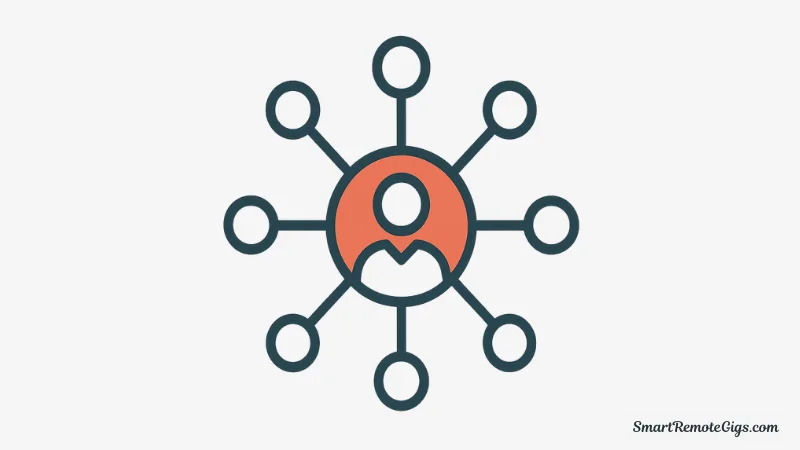
1. Post a “soft launch” announcement on your professional social media profiles (like LinkedIn) to inform your network about your new services.
2. Send personalized emails to former colleagues, contacts, and friends who may know relevant people in your target industry.
3. Focus on asking for introductions and connections, not directly for jobs, as this is more effective and professional.
Create a Referral Engine

1. Deliver exceptional service on every project to create satisfied clients who are happy to refer you.
2. Wait 1-2 weeks after a project is successfully completed.
3. Send a polite, low-pressure email asking your client if they know anyone else in their network who might benefit from your services.
Launch and Iterate
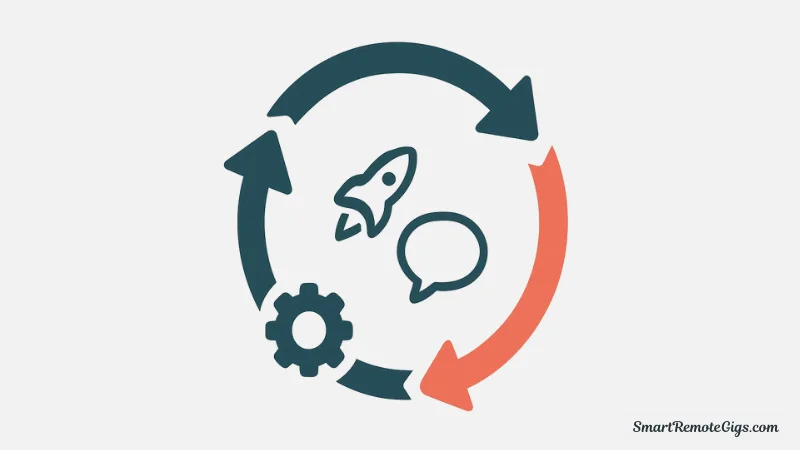
1. Commit to taking consistent action every day, even if it’s small (e.g., sending 3 pitches, making 5 connections).
2. Track your results in a simple spreadsheet to see which acquisition channels and pitch angles are most effective.
3. Use the feedback (or lack thereof) to refine your portfolio, adjust your pitches, and improve your strategy over time.
Tools:
- An email account
- A LinkedIn profile
- A portfolio hosting solution (e.g., personal website, Behance, etc.)
- A spreadsheet or note-taking app for tracking





